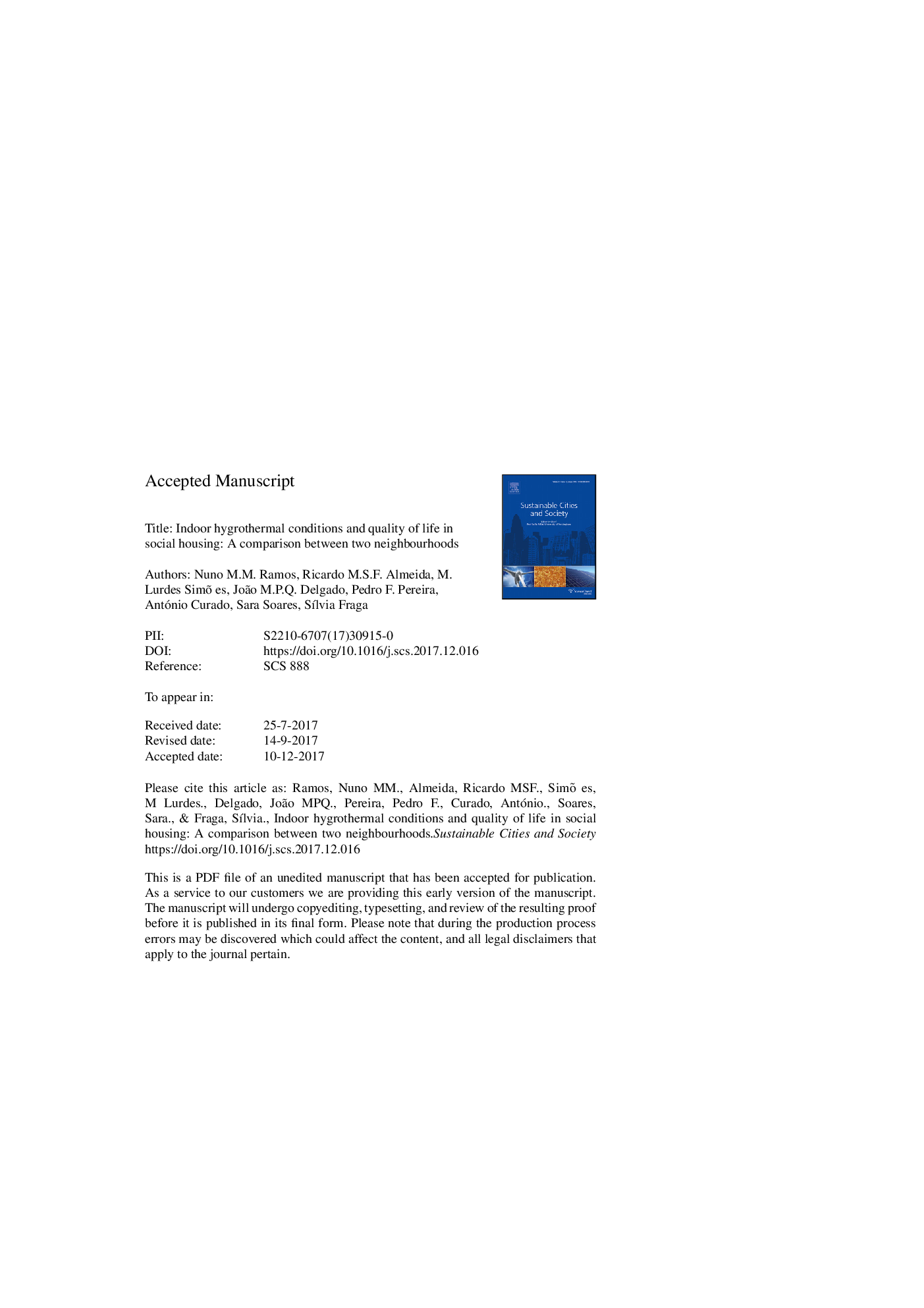| Article ID | Journal | Published Year | Pages | File Type |
|---|---|---|---|---|
| 6775286 | Sustainable Cities and Society | 2018 | 30 Pages |
Abstract
The indoor hygrothermal conditions can affect human related quality of life. This subject is of special relevance in the context of social housing, which are frequently overcrowded and lack appropriate heating, ventilation and insulation. In this research, two social housing neighbourhoods were studied in depth: one rehabilitated and another non-rehabilitated. In-situ measurement campaigns, one in winter and one in summer, and structured questionnaires conducted with the inhabitants were used to characterize the performance of the dwellings. The measurements evidenced that the winter indoor environment in the rehabilitated neighbourhood was warmer and less damp. Moreover, the users of the rehabilitated dwellings demonstrated an increased satisfaction with their housing conditions. On the other hand, the administration of the Short Form Health survey (SF36) instrument lead to results where no significant differences were found between the population living in rehabilitated and non-rehabilitated neighbourhoods. A cluster analysis allowed for the identification of two sets of dwellings with significantly different hygrothermal indoor environments that again demonstrated no significant differences regarding the SF36 dimensions. The questions not linked to SF36 had, however, a more successful result highlighting increased satisfaction of the users in the rehabilitated neighbourhood.
Related Topics
Physical Sciences and Engineering
Energy
Renewable Energy, Sustainability and the Environment
Authors
Nuno M.M. Ramos, Ricardo M.S.F. Almeida, M. Lurdes Simões, João M.P.Q. Delgado, Pedro F. Pereira, António Curado, Sara Soares, SÃlvia Fraga,
